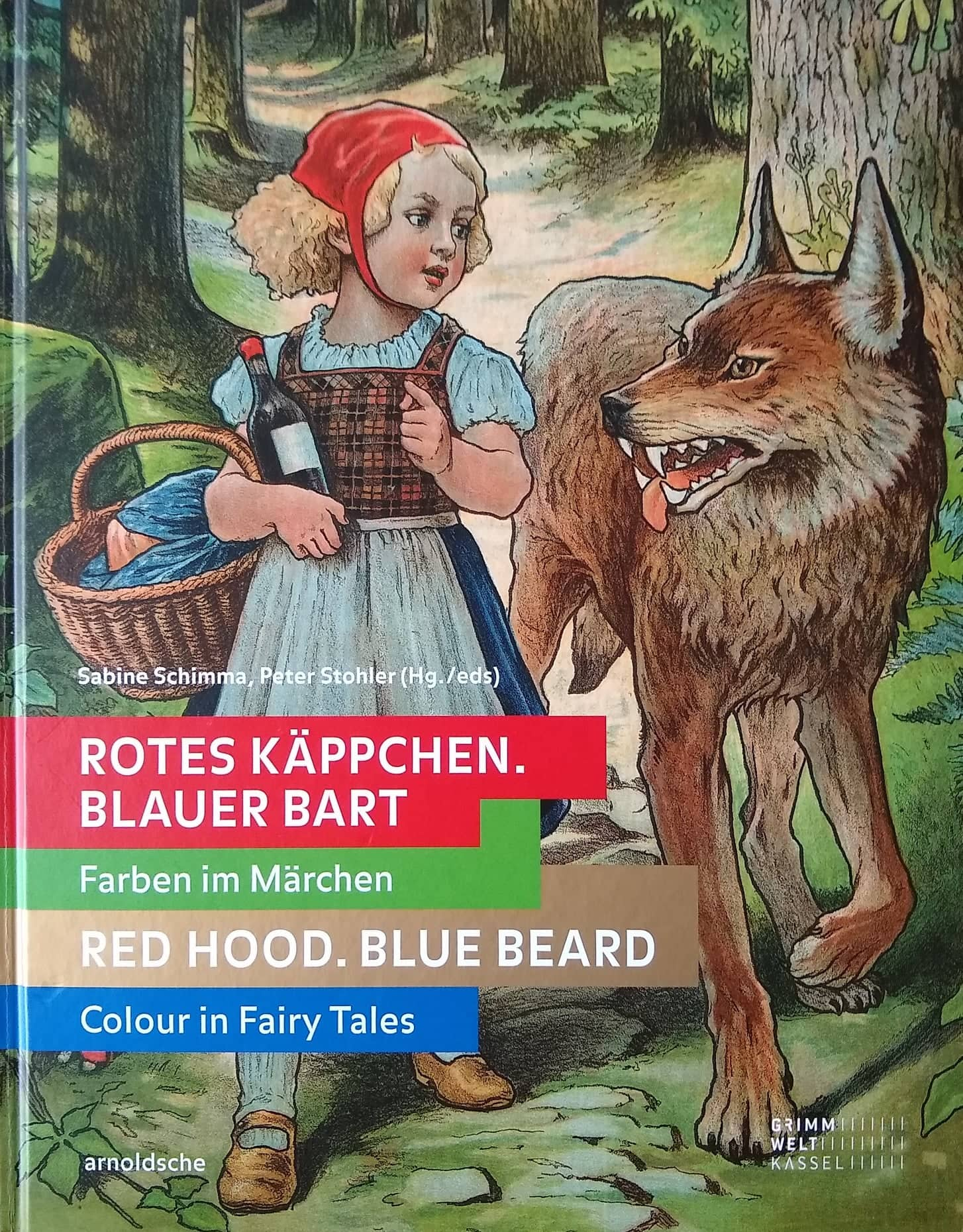by Sabine Schimma; the Introduction to:
Rotes Käppchen. Blauer Bart – Farben im Märchen. Red Hood. Blue Beard – Colour in Fairy Tales
© 2019 arnoldsche Art Publishers, Stuttgart, editors/authors, translator. ISBN: 978-3-89790-573-3 
(Extract)
The Brothers Grimm [Fig. 3] were also occupied with the aesthetics of colours, their psychological effects and their symbolic content. They were acquainted with Runge’s Colour Sphere and Goethe’s Theory of Colours. In Sagenkonkordanz, for instance, an index that they compiled on epic folk literature, they took detailed extracts from Goethe’s reflections on colour, among other doctrines, regarding the ‘sensually moral effect of colour’ and from the colour examinations in Friedrich Creuzer’s Symbolik und Mythologie der alten Völker, besonders der Griechen. In the Deutsches Wörterbuch (German Dictionary) commenced subsequently, a vast number of entries appears beneath the term ‘colour’ and its collocations, reflecting the broad spectrum of the various ways in which it is approached: from artists’ practical ‘paint application’, via the psychological ‘colour mood’ and the physical ‘colour refraction of light’, through to raw materials for dye production, such as ‘dyers’ root’ (madder), everything is covered. The remarks on its systemisation beneath the umbrella term ‘colour’ are particularly interesting: after mention of the six principal colours, assumed in Antiquity and the Middle Ages to be white, black, yellow, red, green and blue, the seven colours of the prismatic spectrum and the rainbow, red, orange, yellow, green, blue, indigo, violet are listed, wherewith a reference to Isaac Newton’s theory of light is produced. Newton had traced back the origin of colours to different degrees of light refraction. Aesthetic criteria for the appearance of individual colours are also indicated, when ‘light and dark, pure and turbid (murky), garish and soft, shrill and quiet (gentle), matt and replete (saturated) colour’ are listed. At another point, Jacob Grimm draws on red and white to make reference to the value of colours in folk literature: ‘They sprang directly from the human breast and are the epic expression for comparison of beauty with snow and blood familiar to the poets of all peoples.’
In the following, we take the encounter of a golden age of colour with the brisk publication of fairy tale anthologies in the nineteenth century as the occasion to enquire after the significance of colours in folk tales and literary fairy tales of that period. Our examinations revolve around the Grimms’ collection of Children’s and Household Tales (GFT; orig. German title Kinder- und Hausmärchen)*, but we also intend not to let their predecessors and successors go unnoticed. The tales by the two colour researchers Goethe and Runge will be likewise included in the considerations that follow. Runge contributed two tales to the Grimm collection: The Juniper Tree (KHM 47) and The Fisherman and His Wife (KHM 19), both of which he recorded in Low German dialect. Goethe penned literary fairy tales in turn. Fairy tales from other European countries are also taken into consideration alongside tales from the German-speaking region. These include fairy tales from the anthology Histoire ou contes du temps passé (1697) by Charles Perrault, an author and civil servant at the court of Louis XIV in France, and the highly successful fairy tales by Hans Christian Andersen, which reached a wide audience owing to their vivid portrayals.
* In this and the subsequent texts, the sources from Grimm’s Fairy Tales are indicated with the initialism GFT and the relevant number of the tale. Taken as the basis was the edition of The Complete Grimm’s Fairy Tales, trans. Margaret Hunt, London 1884.
The next extracts (via the poppy again) come from the back of the book, from the interview with Remo Albert Alig:![]()
